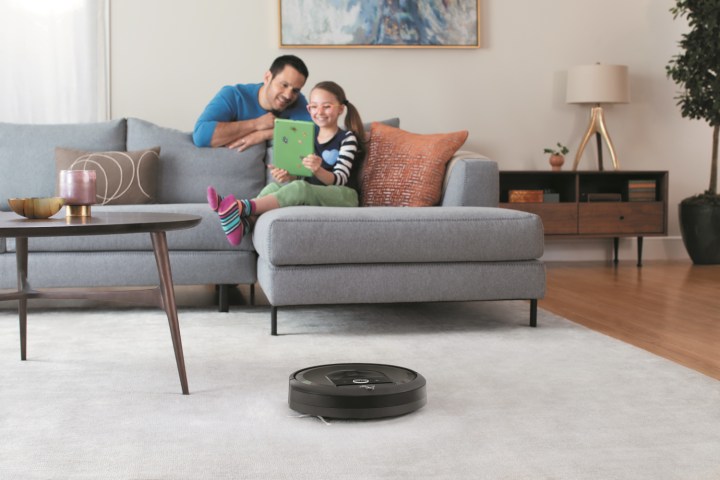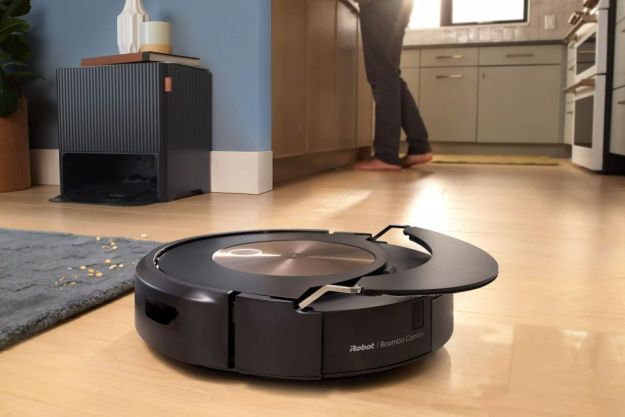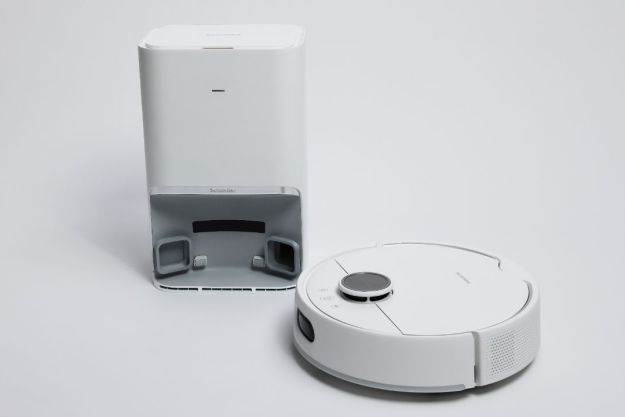Robotic vacuum cleaners are the perfect complement to a weekly or biweekly cleaning of the home. They can zip around during the day and keep your floors significantly cleaner than they would be otherwise. Best of all, most robot vacuums are set-it-and-forget-it. Once you program a cleaning schedule, they’re good to go, with little further input on your part.
Some higher-end robot vacuums actually learn the layout of your home and present it to you via a digital map. This map can then be used to designate areas that are off-limits to the device, specify areas for a more thorough cleaning, and much more.
The way robot vacuums learn the layout of your home involves more than just a few sensors, though. A tremendous amount of data is absorbed and processed in order for a robotic vacuum cleaner to learn and navigate the layout of your home. Digital Trends takes a deep look into the behind-the-scenes computing to explain exactly how a robot vacuum cleaner works.
Sensors are the eyes to the world
Before the algorithms and data processing can be explained, you first need to understand how the device makes use of its various sensors. A standard robot vacuum cleaner is equipped with a host of different sensors that allow it to “see” and “feel” the world around it. Although different models have different ways of processing information, this article will take a look at the iRobot Roomba i7+.
The Roomba i7+ has a set of six cliff sensors that constantly emit a beam of infrared light. This light bounces back to the device immediately, and if at any point it does not receive an instantaneous response, the Roomba will stop and change direction. These sensors are located at the edges of the device to help prevent the Roomba from going over a step.

Another sensor is the floor-tracking sensor, found on the bottom-front of the Roomba. This sensor works much like the sensor on a standard computer mouse and tracks the location of the device.
The bumper on the front of the Roomba is a sensor, too. This is an object sensor. When it bumps into something and retracts, the Roomba knows it has reached an obstacle (whether an object in the floor or the wall) and needs to change direction. This works in conjunction with an actual wall sensor that allows the Roomba to move alongside a wall without actually bumping into it.
There are other sensors, too — like the ones on the bottom that align the charging pad on the Roomba with the charging pad on the base station. While not directly related to navigation, these sensors are necessary for supplying power to the device. It’s through these various sensors that the Roomba is able to navigate and clean throughout your home.
Decoding the data equates to efficiency
You might think the Roomba just moves around the room, vacuuming up debris until it bumps into something. In some cases, you’d be right. Early robot vacuums used a random pattern just like this to do most of their cleaning, but advancements in recent models actually take all of the data they gather through the cleaning process and map out the most optimal route throughout the home.
For exmple, iRobot devices use a system called iAdapt to navigate throughout the home. The iRobot Roomba i7+ specifically uses iAdapt 3.0 Navigation with vSLAM technology — or visual simultaneous location and mapping — to clean the home more efficiently by tracking where the Roomba has already been and where it still needs to go.
In practice, this means the Roomba is able to move around the room and note obstacles in various locations. However, it doesn’t do this automatically. After you set up a device, you will need to enable the “Smart Maps” function. The Roomba will require four to five runs in order to make an accurate map of the home.
This map can be updated in time. If you move furniture around, the Roomba is able to note changes in the layout and adjust its path. This is also useful for when it encounters an object, like a child’s toy that was left on the floor (or under the edge of the couch).
Something to note is that different robot vacuum companies use different methods for mapping a space. Some brands like the Samsung Powerbot vacuums use a camera-based mapping system, while other brands like the Neato Botvac series use lidar (light detection and ranging).
Once you have mapped out the home, you can designate different parts of the map as different rooms and tell the Roomba to clean only that space. You can also set up virtual walls or boundaries that signal the Roomba to go no further, keeping it out of areas that might tangle it or cause other issues. The iRobot Roomba i7+ uses lidar tracking to navigate a room.
Obstacles and hurdles
Although modern robot vacuums use more efficient and intelligent navigation methods than earlier models, there are still hurdles that can make it difficult for the devices to operate. Thanks to the iAdapt 3.0 Navigation system, the Roomba i7+ does not require light in a room in order to navigate, but other robot vacuum cleaners might. For example, models like the Neato Botvac can encounter difficulty around dark walls that interfere with the way lidar works — and models that rely on camera navigation might not work in a dark room.
Your robotic vacuum may still sometimes require input (like if they become tangled in cords, or if the suction becomes clogged), but the devices are mostly self-sufficient.
Models that use mapping technology will be more efficient after multiple runs of your home. When the map is complete, the Roomba will be able to better navigate and more efficiently clean your space.
If you want to ensure you receive the most efficient cleaning possible from your robot vac, make sure to clean up the area beforehand. It will move around toys, but larger pieces of debris may block the suction, and loose wires can tangle the wheels and cause the Roomba to get stuck. Taking 30 seconds to clean up an area before activating the Roomba can make a big difference in how well it operates.
Want more news, reviews, guides, and features from Digital Trends? Follow us on Apple News, Google News, and Flipboard.
The surprising tech in robot vacs
- Should you be worried about cameras in robot vacuums?
- Your vacuum might be vomiting dust all over your house
- These robot vacuums have built-in cameras
- Robot mops can’t sanitize your floors. Here’s why
Editors' Recommendations
- iRobot launches affordable robot vacuum and mop combo that costs just $275
- Eureka shows off an innovative robot vacuum with a belt mopping system at CES 2024
- Ecovacs upgrades the X2 Omni robot vacuum with a cordless vacuum attachment
- The SwitchBot Mini Robot Vacuum K10+ is designed for cramped rooms and tight spaces
- Self-emptying robot vacuums: Do you really need one?







